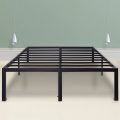One of the smartest and easiest ways to beautify your home is by performing a bathroom remodelling. From removal of old fixtures and archaic tiles to adding a new and stylish look, everything is essential to make your bathroom look elegant.
But, before you step ahead, planning out an entire bathroom remodelling process is very important. This will help you to know the exact amount of budget, time and materials that you’ll need at the time of renovating your bathroom.

However, if you have any questions – here’s a comprehensive guide to bathroom remodelling for a safe renovation process without any hassle.
- Removing the bathroom fixtures and fittings
There are many unpleasant fixtures and fittings that you may want to remove from your bathroom. This can be achieved with by removing old or dated fixtures one by one.
The first thing is to examine your entire bathroom carefully and determine the things that you want to change or remove. Next, remove the vanity, cabinets, bathtub, toilet, the shower wall and the floor. If you’re confused about where to start, glance below:
- Toilet, drains, sink and other fixtures are appropriate to start with; they are small so removing them is easier. In fact, it will help you to avoid any unwanted spills while removing other bathroom fixtures.
- When you’re removing the insulation from the walls, make sure to use a reciprocating saw to cut down the insulating panels. It’s advised to follow the safety measures for better protection.
- Next, remove your old bathtub and floor tiles for fitting new plumbing drains.
- At the end, remove the remaining bathroom features such as mirrors, cabinets, vanities, etc. that you want to change.
- New shower installation

Now that you’ve completely removed your old or dated bathroom fixtures, the next thing is to fit a new shower in your bath space. Pick a shower design that is perfectly suitable for your bathroom. In fact, there are many different shapes and sizes available in bathroom showers such as square, pentangle and rectangle.
So, at the time of installing your shower, make sure to fix the drains in your new bathtub or shower. If you observe any mould build up or water damage, replace the shower subfloor before fitting the new shower.
- Check out the space for new bathroom fixtures
After you’ve installed your new shower and bathtub, it’s time to place your cabinets and vanity in your bathroom. But before fitting them, you’ll need to make certain changes to incorporate the new dimensions.
Say, for example, moving the electrical outlets to other walls so that your new cabinets and vanity can easily be lined up. In fact, if your sink needs some modification, you should adjust your drains to the requirements to get the best results.
- Replace old floor tiles with new tiles
If you’re not planning to remodel the entire bathroom, replacing the floor can be a great way to enhance the overall look. In fact, a bathroom makeover is incomplete without replacing the floor with stylish tiles. There are varied designs and patterns available in floor tiles that can maintain a balance between the appearance and other bathroom features. So, before you start laying the new tiles in your bathroom, make sure to choose suitable tiles, as well as draw vertical reference with the help of chalk lines. These chalk lines are perpendicular to the wall that will allow laying the tiles in a straight line.
- Paint your bathroom walls
Before painting the walls, it is essential to hang new drywall on the surface of your bathroom. No wonder, it can be a lengthy process because you need to custom fit the new drywall into the size of your bathroom layout. But, it will get easier once you start fixing the drywall in the bathroom. Yet, there are certain important tips that should follow. They are:
- If you’re fitting the drywall for your shower or bathtub area, cement board is a great option to use.
- To avoid unwanted water damage on your cement board, use waterproofing membrane to guard the walls.
- To fill up the gaps or to cover the seams, ensure to use drywall mud and tape for better sturdiness.
Once you’ve completed fixing the drywall, you can start painting the walls. You can select any paint that is suitable for your bathroom layout. In fact, there are many types of paints available with varied features such as mould and mildew resistant, water resistant and more. Hence, it is important to select an accurate paint for creating a beautiful bathroom.
- Install the vanity and other bathroom features

If you’re not sure of doing the electrical work on your own, it’s recommended to hire an electrical expert to fit the new light fixture. So, once you’ve completed fitting the lights and painting the walls, it’s time to install your vanity and other bathroom features.
While installing the vanity, the first thing to focus is the faucet and the sink. Ensure firmly connecting the drains to the tap so that you, as well as, your family can use the bathroom. Finally, ensure all bathroom features are properly fitted including mirrors, shelves etc.
The Bottom Line
From the start to the finish, your bathroom remodelling may take a few days to complete. Hence, if you’re planning your dream bathroom remodel, following the stated steps will help you to get a beautiful outcome. Yet, if you’re unsure to perform a bathroom DIY process, get in touch with the experts – Jude’s Bathrooms is a reputed specialist for bathroom renovations in Melbourne that you can completely trust. If you want to have a quick bathroom remodelling, call Jude’s Bathrooms on 1300 663 805 for a 1-day bathroom remodel today!

















